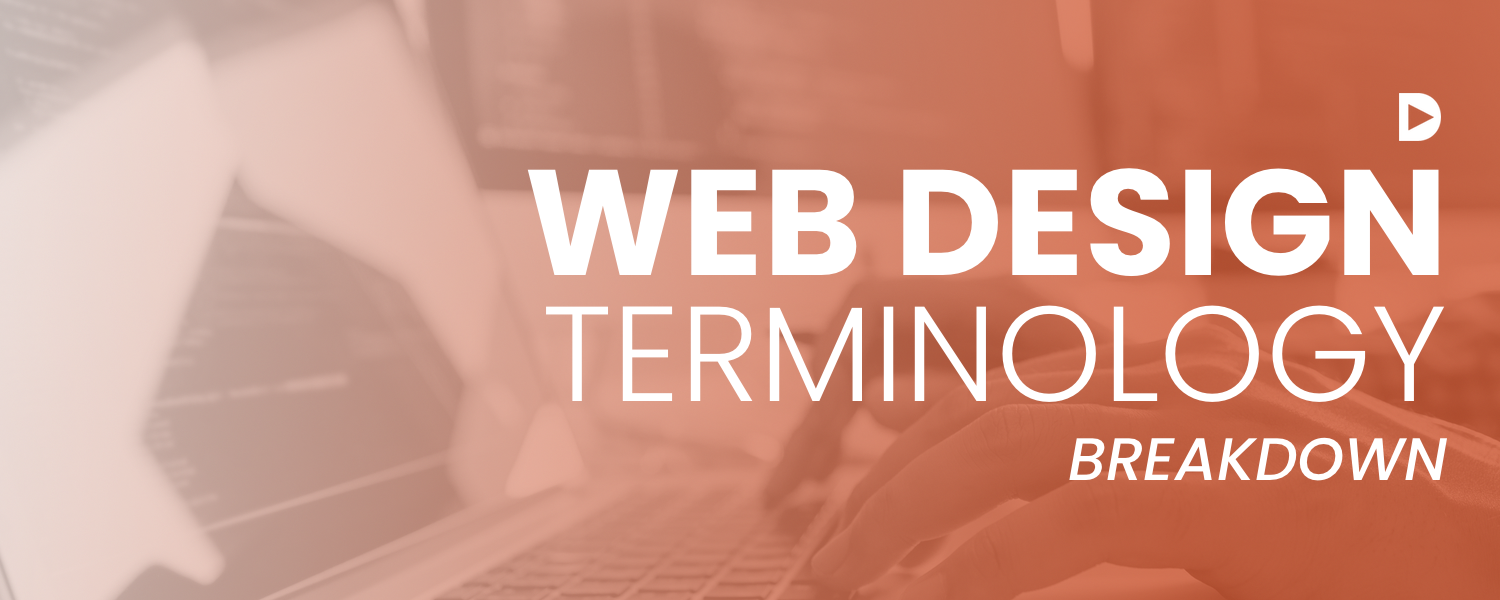Web Design Terminology Breakdown
2023 has been a year of talking about web design on the blog so far. We’ve discussed web design trends, leads and lead generation, and calls to action. Then, earlier this month we jumped into a breakdown of some of the most recognizable website builders available for small businesses or personal websites that are easy to understand and user-friendly. Today we’re going to venture into a slightly related topic and look at some of the terminology related to web design. If you do end up hiring a web designer, these are some basic terms you might hear and might want to be familiar with ahead of time.
-Accessibility: The need to make sure that your website is able to be perceived, navigated, and interacted with by any person regardless of any disability.
-Anchor Link/Jump Link/In-Page Link: All of these terms are referring to the same thing. Any of these links lead users to content on the same page. Common uses of this would be a Table of Contents or when there’s a place at the bottom of a webpage that says “Back to Top.”
-Assets: This would be a catch-all term referring to all the information and materials needed to successfully make a website. So, assets could be the actual text information, graphics, photos, videos, or even audio files.
-Content: In basic terms, content is the material that users see and consume on a website. It can be text, images, data, video, or anything that is going on your website. This is the element that you’re providing to your web designer - information about your business, contact information, services, products, etc.
-CSS: Cascading Style Sheets is a coding language used to describe the presentation of your website’s look and layout. It’s responsible for the look of your background, colors, layouts, spacings, and animations.
-Home Page: This is the default page of your website. It’s the first thing that appears when someone types in your URL and is usually an introduction to the content that’s throughout the entire website.
-HTML: HTML stands for HyperText Markup Language and is the standard coding language for web page creation. It’s used to add text elements and is needed to create and structure sections, paragraphs, and links.
-Landing Page: This is a term for the first page that appears when a person clicks on a link from a search engine, email, ad, or some additional source. It is typically a standalone page.
-Mobile-First: This refers to the process of designing a website for the smallest size first before designing larger sizes. In other words, designing for access from a mobile device before designing for web browsers on computers.
-Responsive/Adaptive: Responsive design is a fluid approach where the webpage rearranges itself automatically based on the screen size that it detects. Adaptive design is where the browser loads a layout specifically made for the given platform. Typically, responsive design doesn’t offer as much control as adaptive design, but adaptive design also takes a lot more work to build and maintain.
-SEO: SEO stands for Search Engine Optimization. In developing and building a website, it’s important to make sure that it’s optimized for search engines like Google, which makes it more discoverable. The end result of that is to hopefully increase web traffic and therefore sales.
-Sitemap: Simply put, a sitemap is a list of all the pages within a website. Typically it is presented as a flow-chart that shows all the site’s pages and how they’re connected. It’s intended to make sure your content is properly organized and easy for visitors to navigate.
-Style Guide: A style guide is a collection of all the design decisions about your website. This would include all the decisions made about color scheme, typography, icons, spacing, imagery, buttons, etc. It also includes a set of guidelines to ensure consistency for all of these elements across your website.
-User Experience (UX): UX design is focused on the experience a user has with a website. It involves making sure that content is useful, findable, accessible, and credible. This area typically deals in wireframes, prototypes, and research and centers on the architecture of information.
-User Interface (UI): UI design is more focused on the visual aesthetics like the structure and the look of the website. It focuses on the colors, typography, graphics, mockups, and interactive elements.
There is always more terminology that we could cover, but hopefully this provides you with a succinct but helpful list of buzzwords. As always, if you are looking for a simple yet efficient website, we encourage you to check out our services here. We’ll be back with a focus on social media on the blog next month.


